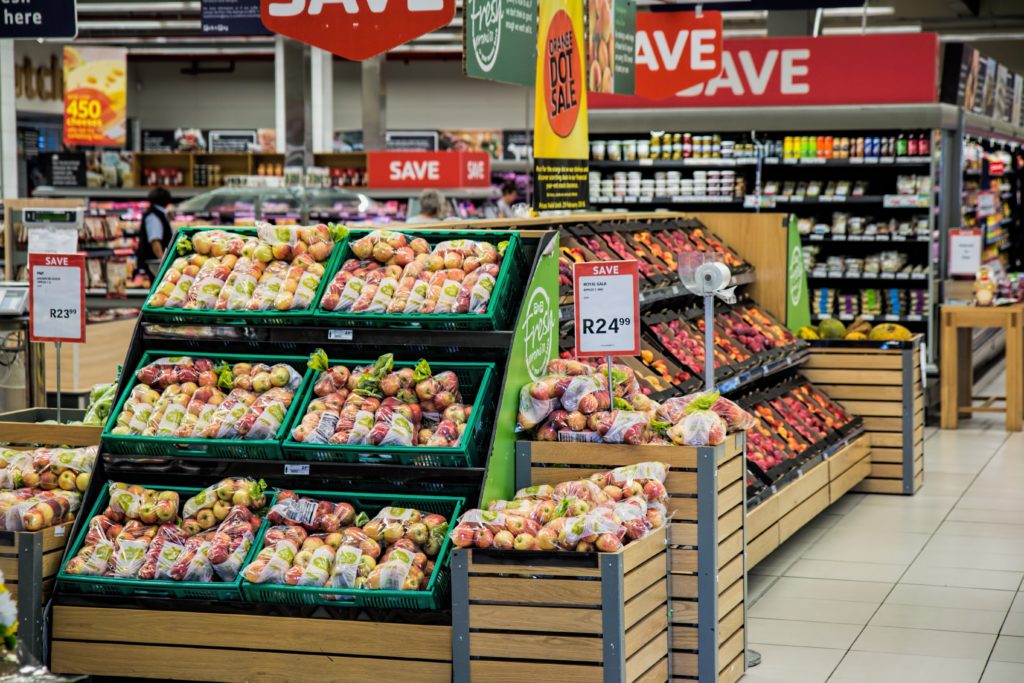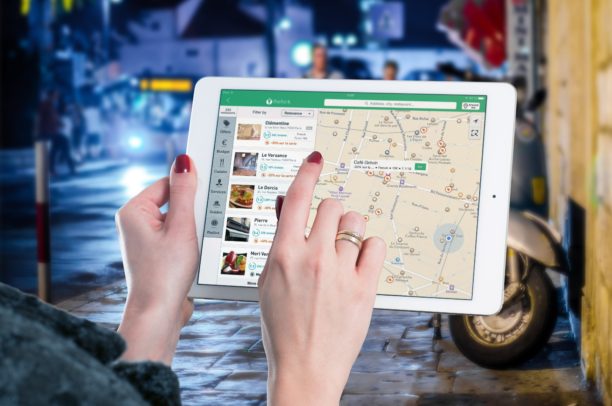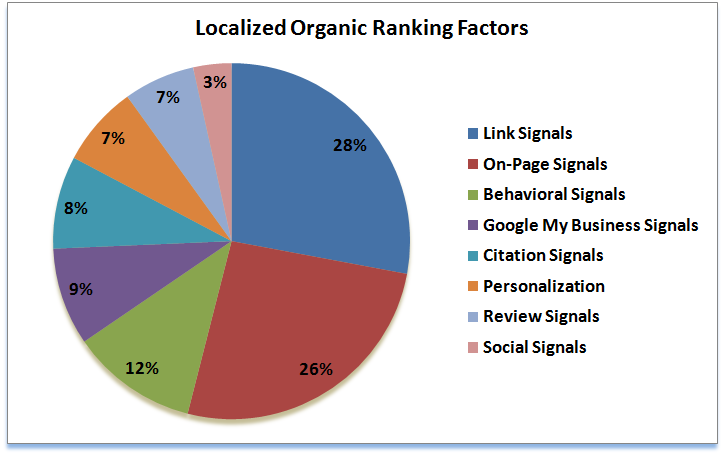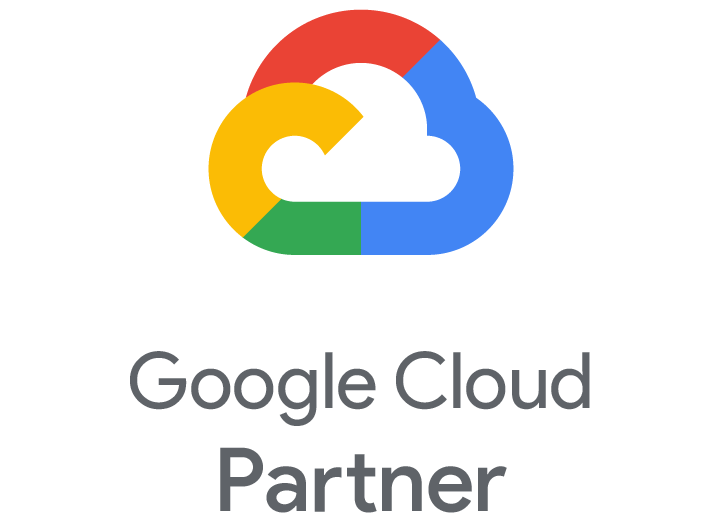Digital marketing is an important asset for the proper and successful development of each business. If you own a small company, though, your aim is to attract the local customers and establish your name in the area you are located. Hence, local SEO is the tool that you need to use in order to achieve your goal.
The truth is that local SEO has been evolving through the years and some experts argue that its importance has been diminished when Google shortened its local pack from 7 to 3 search results or with the introduction of its Pigeon algorithm update in 2014. Most of the SEO experts, however, believe that the local search remains one of the most powerful ways to influence the decision of a user. Therefore, local SEO, when properly exploited both on and off-site, can be critical to the success of a local business in 2019.

In order to be able to make the best use of local SEO, you need to be aware of what it actually means, how it differs from other types of SEO and why is it important. It is essential to know and use the main local SEO tools and strategies that can help you outrank well-established brands in your locality. Here is how to achieve it.
What is local SEO?
In order to use local SEO properly in 2019, it is necessary to know what stands behind the term. The main aim of local SEO is to make your business rank among the first listings when it comes to location-based searches. Local results give small business the option to enter into competition with well-established brands by giving the small company the chance to get a better ranking than the international brand.
Local SEO helps both the business and customers. Users who are looking for products and/or services in a certain locality, use local search and phrases like “Colorado restaurants” or “Dublin car rentals” to find what they need. In most cases, local search is further narrowed to the so-called explicit local search which includes a postal code or a street number so that the users can get more precise results and find the nearest business that can help them.
Local SEO uses a series of on and off-site techniques to make sure that your business ranks among the first in your locality. Thus, it generates traffic to your website which eventually results in customers and profit. Local SEO ensures that your business appears as one of the first suggestions when certain geo qualifiers like city, zip code, street number are used.
In order for local SEO to be successful, your business needs to meet a few criteria:
- To have a well-established Google My Business verified location
- To have a consistent NAP (name, address, phone) across the internet
- To have a website optimized for mobile use
Why is local SEO important in 2019?
With the changes in the local pack results introduced by Google, the importance of local SEO actually grows. The introduction of new technologies and especially the popularization of the smartphone and mobile searches made SEO experts take a different look at local SEO. The challenge now is bigger than ever. While Google used to show 7 businesses with their addresses, phone number and direction links in the form of a snippet as a result of a search for a business near you, now the number is reduced to three.
The local 3-pack is the new Holy Grail now pursued by SEO experts. The aim now is to be one of the top three businesses in the locality that will appear in the Snack pack (as it is often called). SearchEngineWatch published a study revealing that 70% of people using mobile search call a business directly from search results on Google. In addition to that, a MOZ study reveals that 44% of the users who searched for local results clicked on the 3-pack listing, while only 8% decided to load more results.
With the increased competition by bigger brands, which often appear on Google maps in local search, it is of paramount importance to use the right local SEO tools that will guarantee your business better rankings and a place in the Snack Pack. In 2019, the fight for these three places will be stronger than ever since many more users will rely on their smartphones and mobile devices to locate the nearest and the best service. Hence, identifying the right keywords and providing great content that improves your rankings also increase their significance along with NAP consistency and proper management of GMB.

How local SEO differs from other types of SEO?
In order for your local SEO to be successful, you need to know how it differs from the other types of SEO that are most commonly used. SEO can be generally divided into local, national, and international. If you say that there is no much difference between the three types, you will not be completely wrong. The aim of all SEO practices is to rank your business in the first position during a search engine search. The tools used for that purposes are generally the same – proper keywords, backlinks, great content, anything that can drive and increase organic traffic.
The main difference of local SEO is that it focuses on the location and it is the leading notion in all SEO experts do. The aim is to get rankings in the “near me” searches that show your business with its name, address, and contact details. It is fact that local SEO is used mainly by mortar-and-brick businesses such as stores, restaurants, dental practices and the like.
The keywords used for local SEO need to contain the locality along with the other vital information (name of the business, type, products, services, etc.). The desire is to get your business in the local 3-pack of Google or among the first results on other search engines such as Bing or Yahoo!
How to rank locally?
The main question that local SEO needs to answer is how to better rank your business locally. The focus here is perhaps on the word better as in recent years, the competition is getting stronger, while online research becomes the preferred way of finding out whether a small local business is worth it or not. On top of that, Google also announced that famous museums, landmark hotels or well-known store brands will also appear on local search results. That makes the competition for small businesses even bigger as they need to outrank their direct competitors in the region but also the well-established names in the industry.
The challenge is accepted by local SEO specialists who are doing their best to achieve the desired rankings for their clients owning a small business. Two of the most important factors for ranking well in local searches are:
- Google My Business profile
GMB allows each business to create its own free business profile and thus show on Google Search or Maps. Having a profile in GMB is a must for any small business that wants to be found by customers and that aims to optimize its rankings and appear among the first.
The first and most important step, of course, is to check if your business has a listing and if not to create one. It may sound strange to you that your new undertaking may have a listing but the fact is that any Google user can create a listing. Hence, it is important first to check if you will appear on Google Search or Maps and then proceed with creating your profile. Thus, you will avoid creating multiple listings that will be counter-effective.
In case you do not have a listing, which is most likely if you have just opened, you need to simply follow the instructions and create your free profile. If you find that there is already an existing listing, you need to claim ownership of it. Thus, you will have access to GMB reports, you will be able to update or change information, respond to reviews and in general, manage the profile the way you want.
Make sure to add actual photos of your business interior and exterior and to include opening hours and other important information. This will make your profile look more reliable and catch the eye of the potential customers.
There are constant changes to GMB that you need to keep track of and know how to use. As a whole, Google tries to provide optimal services to businesses who have registered and verified their GMB listing. The improved data provided by GMB insights can help a business track important information and take the necessary steps.
You can view the insights by logging into your business profile and find data about how and where customers searched for your business. There is information covering the past 28 days about how users search for your business, where users view your business – on Search or on Maps, and what was the follow-up action – getting directions, visiting your website or calling.
Another improved feature of GMB insights is that it allows you to track details for multi-location businesses in a much easier way. You can download the data to a spreadsheet and review in details the performance for each of the business locations.
- NAP consistency
NAP is one of the most important abbreviations when it comes to SEO and has a powerful role in local SEO. It stands for Name, Address, and Phone Number and its consistency is critical for good rankings in local organic search results.
When there is geo-targeted research, the search engine, Google, Bing or other uses the NAP information to determine, which results match the search and should appear in the first positions. Hence, your NAP consistency across the internet is vital for your rankings.
In order to check if your NAP details are correct, you need to make sure that they are properly written on your own website and that the same information is entered in GMB and submitted to other directories and websites. This consistency can be used as a verification tool by Google to show that your business is legitimate and to differentiate real from fake profiles established merely for SEO purposes.
Do your best to get as many “local citations” as possible by registering your business in any reputable directory, especially local ones. Thus, NAP data can help you get better SERP rankings.
Two types of local ranking
Local SEO can help your business rank in two different ways – by using the local pack ranking or through localized organic ranking. It is important to make use of them both in case you want your business to be successful in 2019.
We have already mentioned that Google’s local 3-pack is the ultimate goal of any local business. It is actually the best position on the search engine results page (SERP) as it appears even before the general organic results. Many customers will simply use this data to choose a business nearby and won’t even look further down.
Nevertheless, it is also important to pay attention to localized organic ranking. Even if you haven’t made it to the Snack Pack, if your website is one of the highest-ranking results, you will be seen by many potential customers and you stand a great chance of being chosen. To get to these positions, you need traditional SEO techniques with a focus on localized keywords and backlinks, as well as content that targets local customers.
In the battle to rank first, it helps significantly to know, which are the local SEO ranking factors. Every year, Moz completes a report with those factors and provides valuable data to all SEO specialist. This year, the Local Search Ranking Factors survey lists 8 factors for both Local Pack/Finder Ranking Factors and Localized Organic Ranking Factors. The only difference in them is simply the share each factor has in the two different categories.
- Local Pack/Finder Ranking Factors
- Google My Business Signals (Proximity, categories, keyword in business title, etc.) 25.12%
- Link Signals (Inbound anchor text, linking domain authority, linking domain quantity, etc.) 16.53%
- Review Signals (Review quantity, review velocity, review diversity, etc.) 15.44%
- On-Page Signals (Presence of NAP, keywords in titles, domain authority, etc.) 13.82%
- Citation Signals (IYP/aggregator NAP consistency, citation volume, etc.) 10.82%
- Behavioral Signals (Click-through rate, mobile clicks to call, check-ins, etc.) 9.56%
- Personalization 5.88%
- Social Signals (Google engagement, Facebook engagement, Twitter engagement, etc.) 2.82%

- Localized Organic Ranking Factors
- Link Signals (Inbound anchor text, linking domain authority, linking domain quantity, etc.) 27.94%
- On-Page Signals (Presence of NAP, keywords in titles, domain authority, etc.) 26.03%
- Behavioral Signals (Click-through rate, mobile clicks to call, check-ins, etc.) 11.5%
- Google My Business Signals (Proximity, categories, keyword in business title, etc.) 8.85%
- Citation Signals (IYP/aggregator NAP consistency, citation volume, etc.) 8.41%
- Personalization 32%
- Review Signals (Review quantity, review velocity, review diversity, etc.) 6.47%
- Social Signals (Google engagement, Facebook engagement, Twitter engagement, etc.) 3.47%

How to outrank your competition in 2019 using local SEO?
Improving any of the factors as listed above, will provide your local business with a better position. Here are a few tools that you can use in order to rank better in 2019:
- Conduct a local SEO audit– an expert in the field will check if your website has all the necessary elements that can be used in local SEO. It is a good idea to start with the audit and see where you are standing prior to taking any further steps to improve your rankings.
- Make your website easy to read and process by search engines – you can use Schema markup to make sure that all search engines have access to your website and index it properly. Without this, you stand no chance of ranking anywhere, let alone on the higher places.
- Be mobile-friendly – many studies reveal that customers use their mobile devices to search for local business. In most of the cases, the search results in an action – either a call or a direct visit and purchase offline. Make sure, that you give your potential customers to contact you easily. You can simply add a button that allows a user to call your company directly. You will not only make it easier for potential customers to reach you but also send an indication to Google who is watching your site for clicks on your contact details. You will soon see your Google rankings climb as a result of this simple addition. Check that your site is mobile-friendly and if necessary, update to a more mobile-friendly theme, as otherwise, you may lose both leads and ranking.
- Focus on local link building – building links is an important element of successful SEO strategies. For local SEO purposes, you need to focus on getting as many local backlinks as possible. A link in an authoritative site gets you a bonus as it tells Google that your business is reliable and provides what customers need. When it comes to local SEO, an authoritative site may be your local online newspaper or a community newsfeed. You can also reach to local blogs or even contact other local businesses and offer them to work in collaboration and help each other.
- Register on the right directories – the time when quantity prevailed over quality is long gone, so you do not have to register your NAP on every single directory you come across. It is better to choose those which have the highest rankings like Yelp, Trip Advisor, the Internet Yellow Pages. You can also use local directories or contact your Local Chamber of Commerce to get listed there.
- Get more reviews and reply to them – reviews play a vital role in our society. Many people decide on whether to try a new service or product just based on the reviews. BrightLocal reveals that 86% of consumers read reviews for local businesses, and a whopping 85% trust them as much as personal recommendations. It is also important that 89% of the respondents said that they read the reply to the review published by the business. Therefore, it is important to read and reply to the reviews. We all know that it is necessary to do so with the negative reviews but it is also a good idea to reply to the positive ones. Even a simple thank you means that you have read and acknowledged the effort of posting a review for your business. If you have a verified GMB profile, it is easier to get your customers to give you a Google Review, which will help you with your rankings.
- Create content optimized for local SEO – make sure that you have authentic content, which is unique only for your site. You can describe your products and services, and include customer testimonials on location pages. Use hyperlocal keywords and references whenever possible but make sure that your content is readable and dedicated to people and not just created for SEO purposes.
- Embed Google Maps – this will help the customers find your business easier. Embed a Google Map on your contact page or if you have multiple locations, one map for each location on the respective page.
- Make use of local SEO tools – last but not least, make sure that you are using all of the available tools that can improve your local SEO. Some of the well-established tools that SEO specialists prefer for local optimization include Whitespark Local Citation Finder, which checks any online mention of the name, address, and phone number for a local business and helps you maintain their consistency; Screaming Frog to crawl your website’s links, images, CSS, script, and apps and make sure that they are SEO optimized; Moz Local to make sure your business listings are verified on Google and Facebook and help them get distributed in such an online environment; Ahrefs to check that your backlinks are properly done and to get an analyzes of your competitors, the use of keywords and other important data.
Try to implement all of these tactics in order to get better and quicker results. Remember that SEO takes time to reveal its fullest potential so be persistent in applying the good practices in the industry.
Local SEO has experienced changes throughout the years but its importance still remains strong. In 2019, its proper implementation will be one of the key factors for success for small business and hence they need to make use of all the options it offers.


